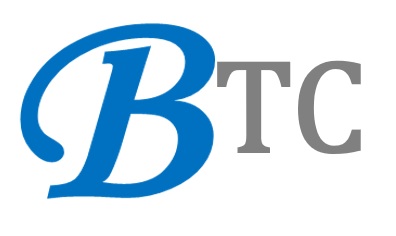
It’s no surprise that people struggle to focus. We’re bombarded with distractions, burdened by unrealistic expectations, and drowning under too many incoming requests. Our team at Crucial Learning polled 1,600 employees and managers to better understand the severity of our collective failure to focus. The data painted an even bleaker picture of our tenuous attention spans.
One of our findings should be particularly alarming for people leaders: 60.6% of employees admit that they rarely to never do even an hour or two of deep, focused work each day without distraction. Where is all their time — and your money — going?
We found that two out of three respondents said they struggle to fully focus on a single task or person. And when they get a rare moment of concentration, one in three said they can only focus on a task for 10 minutes or less before getting distracted. And the effects of unfocused behavior are severe and far reaching. Specifically, respondents listed the greatest costs of their inability to focus as overwhelm, lack of energy, stress, decreased efficiency, less fulfillment, and disappointment.
Let’s just play this out in the life of Damian, a high-performing product manager. The first thing Damian did when he woke up this morning was grab his phone and check his email. While lying in bed, he could do nothing about the requests contained in those emails, so instead, he started his day feeling overwhelmed. Luckily, his calendar was clear, and he’d have time to put the finishing touches on his project proposal that was due to Lisa.
As soon as he arrived at the office, Rajiv cornered him to ask for his quick input on the Q3 projections. It would only take a minute, so Damian agreed. Forty-five minutes later, Damian sent off his opinions to Rajiv. Next, he jumped into that long list of emails he had peeked at earlier that morning. He got a few quick dopamine hits by responding to several. But the next email was a big request and one he couldn’t reasonably get done that morning. So he decided to save it for later, but the task loomed.
Finally, at 11:15 a.m., he opened his project proposal, but 15 minutes later, Rita stopped by to chat, and before he knew it, it was lunch time.
After lunch, Damian tried to get to that project proposal again, only to be called into a quick working session with his manager to address a client concern. It was 3 p.m. before he got back to his proposal, and by then, he was feeling drained and tired, so he opened his email for some quick wins. After processing the afternoon email backlog, including that large request from the morning, it was time to head to his son’s soccer game. Damian sighed. He’d been busy all day, and yet it felt like very little actually got accomplished, including the one thing that had to get done — his project proposal.
Sitting at the game, all Damian could do was think about his incomplete proposal, unanswered emails, and looming commitments. While there were no dings or notifications, he was still fully distracted when he should have been present with his family.
This day wasn’t an exception — it was the norm. No wonder our people are feeling more burned out and disengaged than ever. Distractions — some of which may be important but are distracting nonetheless — are getting the best of them. At the end of the day, our people have been busy, but have they been productive?
As people leaders, what can you do to encourage your team to limit distractions and find focus? How can you create an environment where your people can say no to low-priority work, block out the latest and loudest requests, and commit their time and energy to the most important projects and people?
For the last several decades, we’ve studied and coached leaders in the skills to stay productive in a hyper-stimulated world. This work has been shared in our book and course, Getting Things Done. But let us lay out more clearly what you can do to enable your teams to stay appropriately engaged. Here are seven ideas for helping your people focus:
Inventory tasks and projects.
This is a discipline where common sense is not common practice. If your people don’t have a complete list of their commitments and projects, they can’t realistically prioritize. As a leader, hold people accountable for keeping current to-do lists and give them time each week to do a full weekly review of these commitments so they can stay in control.
Clarify and curate communication channels.
Most of our distraction is the result of a plethora of internal communication channels people must navigate in a typical workplace setting — and that’s not to mention actually processing the content in each channel. Clarify what each channel should be used for and the expectations around response times.
Normalize saying no.
Leaders need to create psychological safety around airing overwhelm and burnout. One brilliant example comes from Rich Sheridan, CEO of Menlo Innovations, a custom software development company. Rich understands the value of employees communicating their bandwidth. He not only encourages employees to speak up, he also normalizes and rewards the behavior.
When an employee says they don’t have bandwidth or are burned out, Rich teaches his project managers to smile and say, “Thank you for sharing that bad news with me.” Why? Here’s what Rich told us: “Most leaders want to quash bad news. But bad news doesn’t just go away. Instead, it permeates the culture, creates quality and morale issues, and leads to endless hours of overtime.” Normalize saying no by making it safe for employees to communicate their overwhelm. Reward the behavior by being deliberate in your reactions.
Make meetings meaningful.
Most people’s workdays are monopolized by meetings. Help employees stay focused by allowing them to decline meaningless meetings. To improve meeting efficacy, one manager we coached set a bold precedent. He said, “If someone invites you to a meeting without a clear agenda and reasons why you’re vital to the success of the meeting, you have my permission to decline it.” This manager put the onus back on the meeting creator (which was often himself) to show greater respect for others’ time. It also put employees in control of their days so they could focus on high-priority work.
Enable purposeful productivity.
During your weekly 1:1, don’t ask your people if they’re “keeping busy.” Rather, ask them if they have the time and space to do the work they need or want to be doing. If the answer is no, support them in addressing that gap. Perhaps they need help prioritizing their to-do lists or are being pulled into fringe projects and tasks and need your help getting removed from those requests. Maybe they need support to block out their calendar for focused work time or need to adjust their hours to work more seamlessly with their ability to focus. Find the gaps and close them.
Formalize focus.
Perhaps the easiest way to encourage focused work is to put it on the calendar. Create a team norm of protected work time. For example, tell the team to block out Tuesday and Thursday afternoons for focused work. During these hours, no one is allowed to schedule meetings, and others across the organization will see the employees are unavailable as well. But a word of warning: If you’re simply going to schedule over this blocked time, don’t block it in the first place. That will only lead to a mistrust of your calendar.
Respect boundaries.
When people say they’re in focused work mode as indicated by their status on team chat tools or their calendar, honor it. As their leader, you may feel these rules apply to everyone but you — but as soon as you interrupt this time, it sets the norm for everyone else to do the same. It sends the message that protected time is a myth and anyone is allowed to encroach on it.
These practices will help you build a culture where your people can focus on the work that really matters. It’s vital that leaders understand these principles because they’re what will keep your team efficiently engaged in a world designed to keep them distracted. Support their ability to focus, and everyone wins.
This post is written by David Allen and Justin Hale.
Original post link: https://hbr.org/2023/01/7-ways-managers-can-help-their-team-focus

